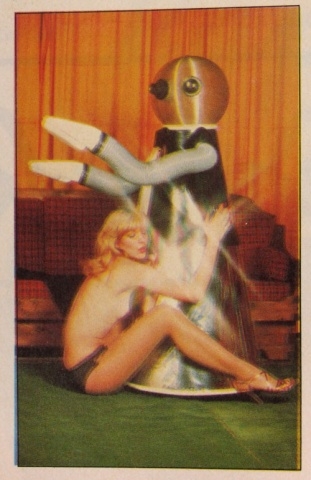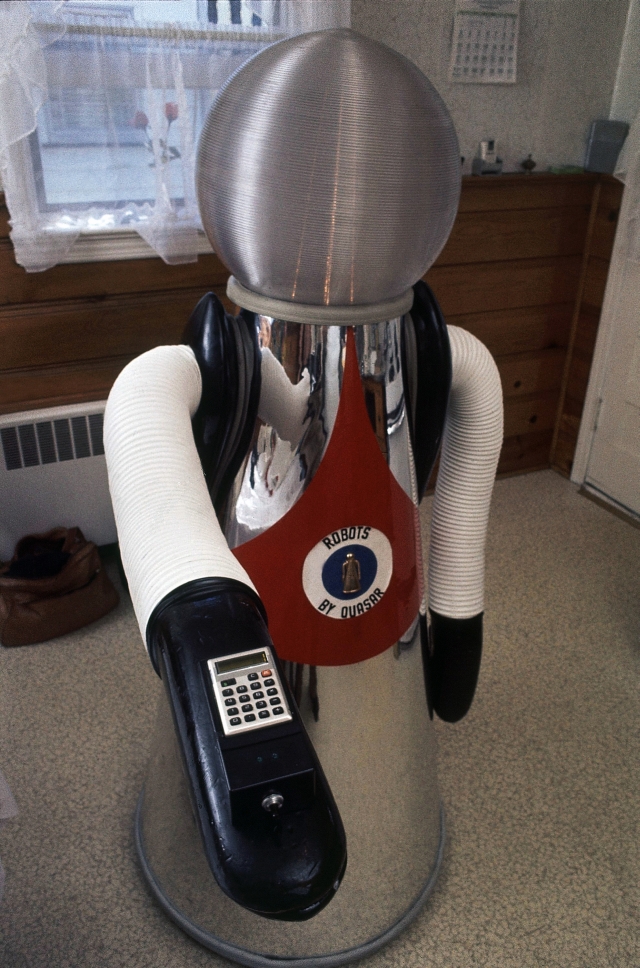

Anthony Reichelt – president of Quasar Industries Inc. with Klatu sporting 'eyes' c1978.
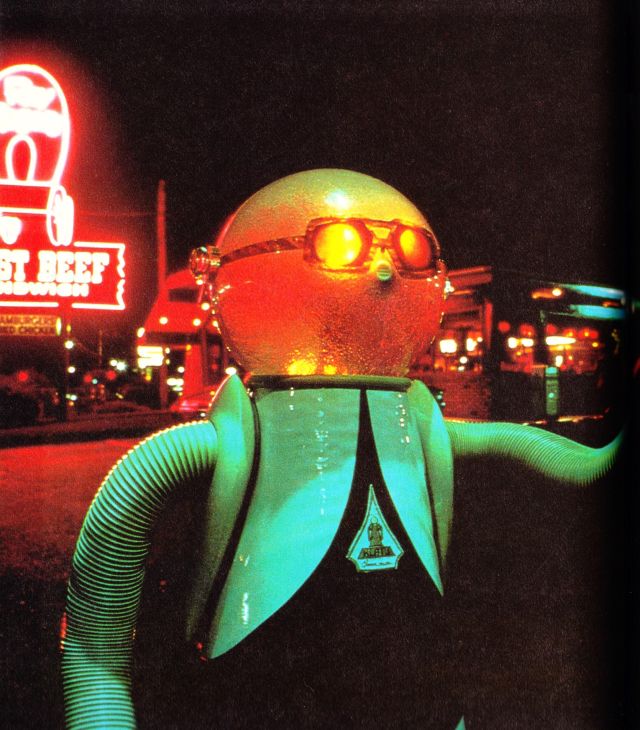
Klatu – [the name Klatu, it was claimed at the time, was based on the utterance of the speech synthesizer chip when the word "u-talk" was spoken in reverse. "Gort" is the name of the Robot in the movie "The Day the Earth Stood Still", "Klaatu" is the 'man' played by Michael Rennie. When searching Google, it is quickly apparent that thousands of people still incorrectly spell Klaatu as Klatu in reference to the movie!]
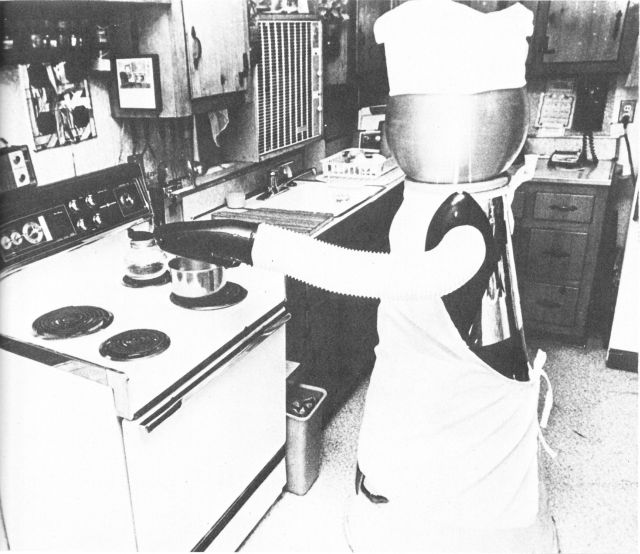
Although appearing metallic, the spherical head was made from translucent plastic, and lit up when Klatu talked.
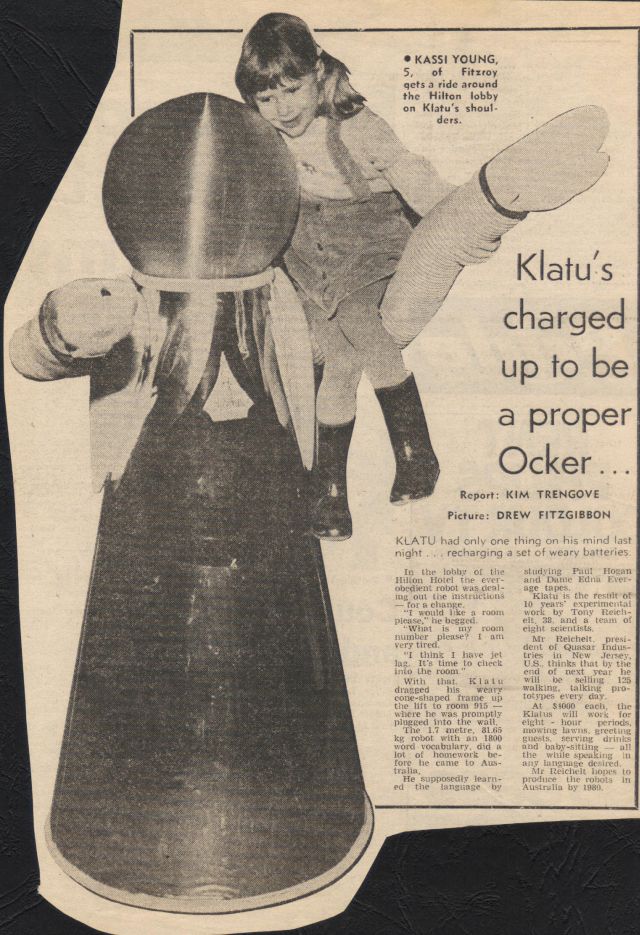
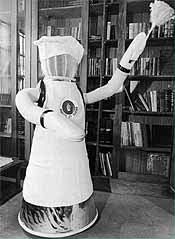
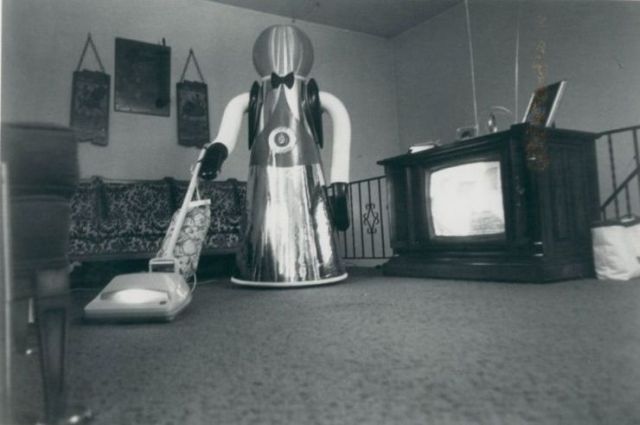
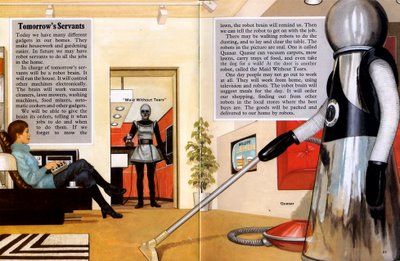
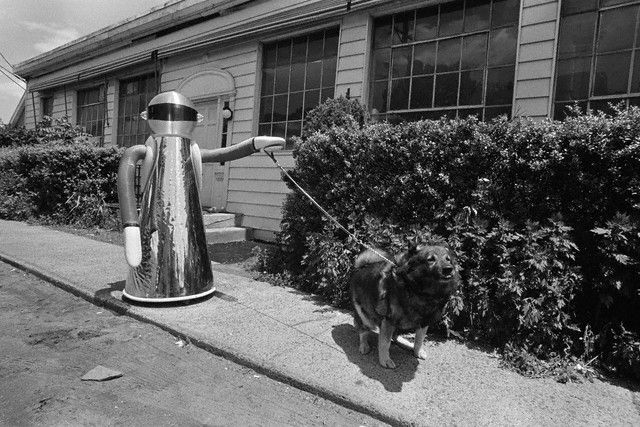
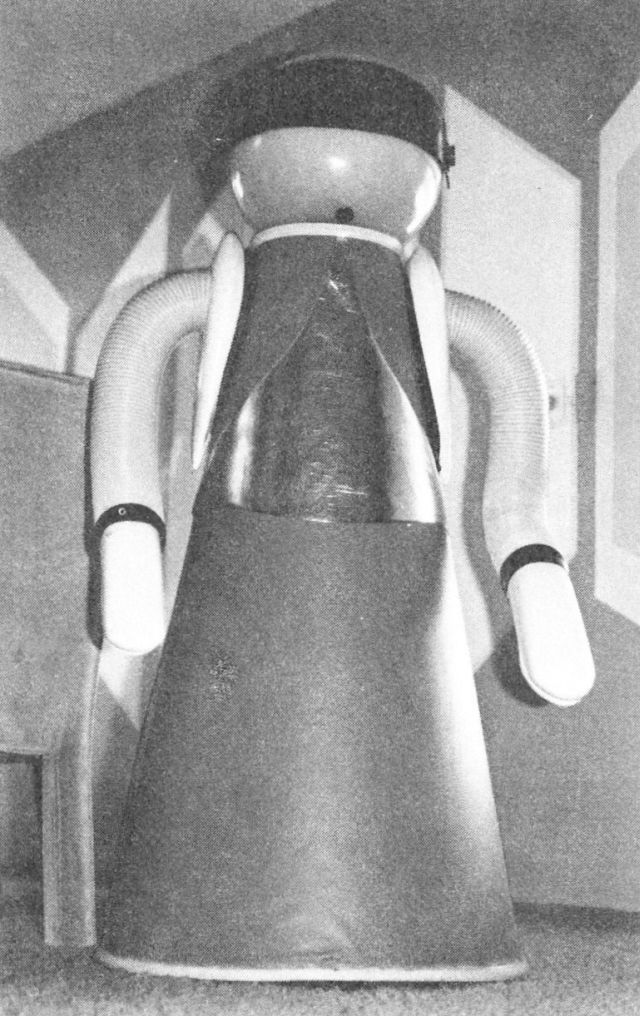
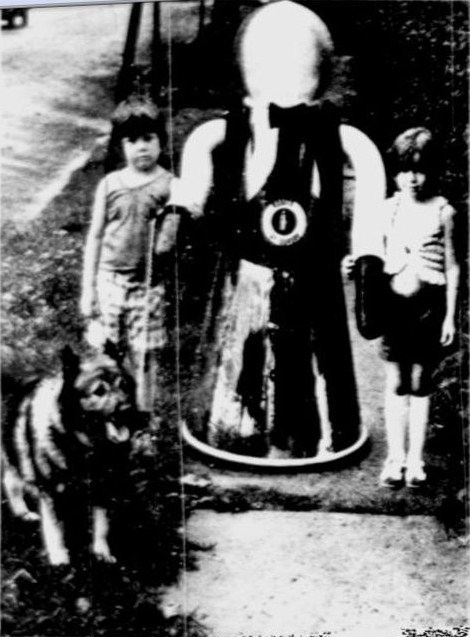
Klatu walking the dog (Oct 1977).
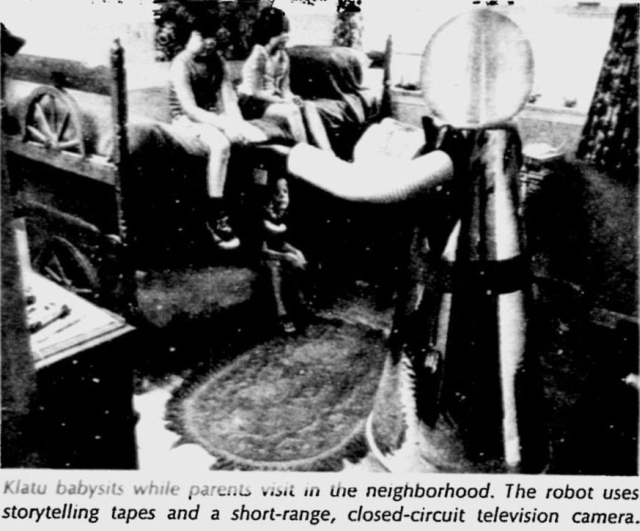
-x640.jpg)
Klatu with Programmable Controller.
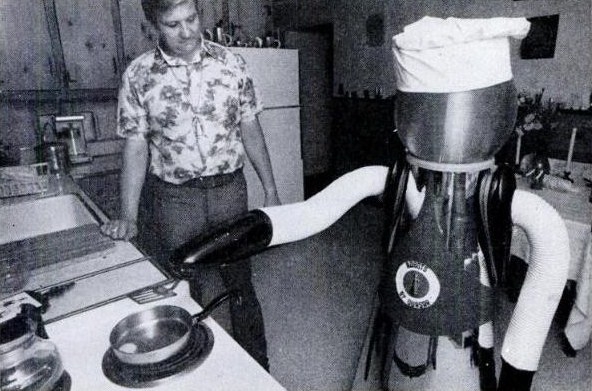
Reichelt with Klatu in the kitchen late 1977. Most attachments or appliances were either strapped to the hand, or inserted into a recepticle within the hand.

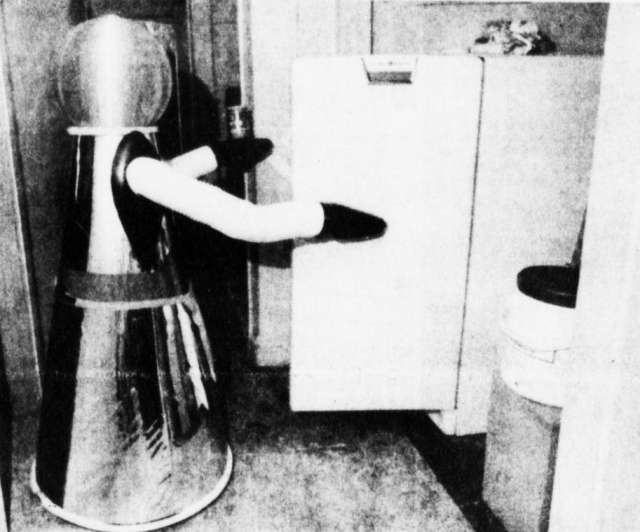

Klatu as minder c 1978.

Klatu painting the ceiling c1978.

Klatu with Anthony Reichelt serving a tray of drinks c1978.
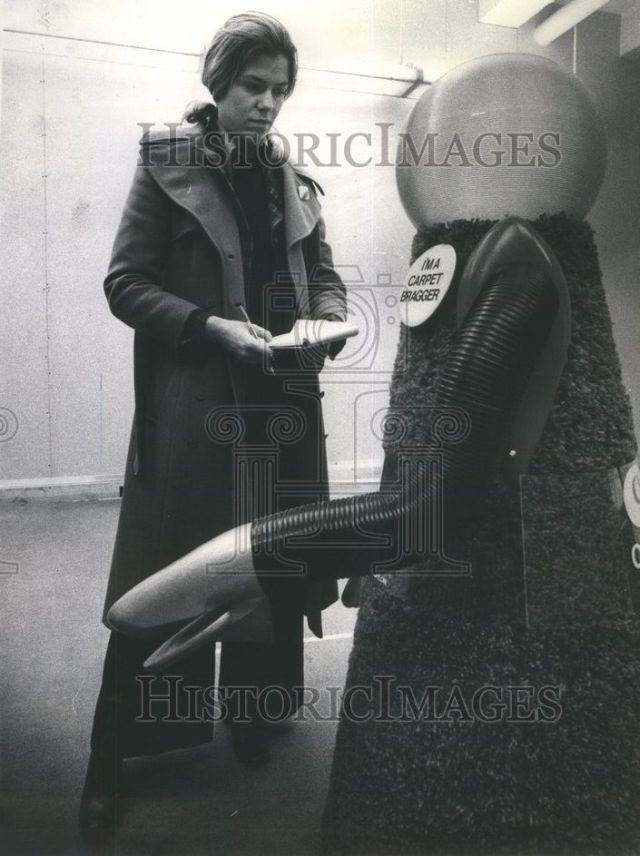
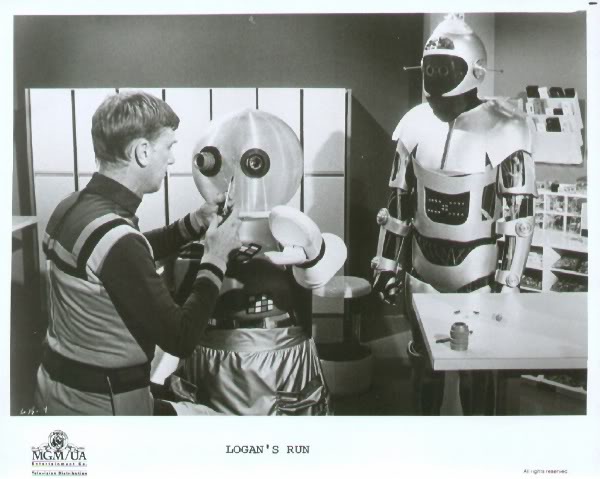
Klatu appearing in the TV series of "Logan's Run". Most likely where the robot's 'eyes' originated from.
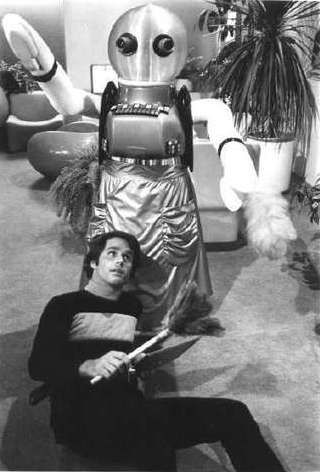
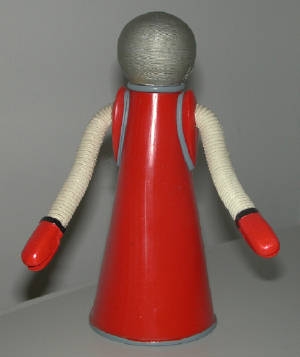
Klatu Robot toy coin moneybox.

"Klatu" Controversy: (under construction)
The Claims
Klatu was marketed as a "Household Android" to differentiate it from the existing promotional and entertainment androids by the same company.
How the Artificial Intelligence industry saw it
How the media reported it.
Reflections from an insider 30 years on.
On Feb 28, 2010, at 1:25, "Reuben Hoggett" wrote:
Dear Mr. Doornick,
My name is Reuben Hoggett and I am currently putting together a history of robots from the 20th Century. Your name has come up in association with at least two of the robots I am to write about. At this point in time, my work is published on my website ( http://cyberneticzoo.com/?page_id=45 ), but my intention is to turn the research information into a book of the same subject.
There are two robots that are of particular interest to me, SICO and Klatu. I'm hoping that you can provide some background on SICO, whether he still exists, and maybe how he has evolved. Some images would be gladly received as well.
The other robot, Klatu, was before International Robotics when you were marketing for Quasar Industries. In my research on Klatu, there seems to be some un-favorable press at the time around the claims of what the Klatu model could do. With 30 years of hindsight and research, I feel that some of that un-favorable press was based on Artificial Intelligence gurus who hadn't achieved much with their own very large budgets, and had observed the promotional robots, not Klatu. I also feel that with the hype of the movie "Star Wars" robots, that there was a public perception to expect the capabilities of 3-CPO and R2-D2. From what I've read, Klatu could be programmed to operate within a mapped-environment. Without obvious sensors, this would have been achieved via floor plans, measurements , and stepping motors. For public demonstrations, I can understand the need for back-up remote control. It appears that Klatu had some voice recognition, synthesized speech, pre-taped messages, etc. I also understand a need to get capital to realize some projects, hence the asking for $4000 up front at the time. Anyway, from a historical perspective, it doesn't look very good for Klatu and Quasar Industries. For the record, I am hoping that you may shed some light into Klatu's capabilities and on how Quasar's robots ended their careers. I've tried to locate Tony Reichelt but without success.
Any information on these robots would be greatly appreciated.
Kind Regards and Greetings from Australia,
Reuben Hoggett.
From: Robert Doornick
To: reuben hoggett
Sent: Monday, March 01, 2010 3:57 PM
Subject: Re: Re The History of Robots from the 20th Century
Thank you for your email Reuben; and for expressing your interest in our Communication Robots.
It has been a long time since I have heard of the Klatu robot. Tony Reichelt was a promoter at heart, and was often misunderstood by members of the press; and even more so by the research industry who greatly misinterpreted Quasar's strategy to create the "illusion" of magic with their Klatu robot.
I think much of Tony's dilemma came from the fact that AI & Robotics were young & emerging fields. As such, many of it's proponents were eager to defend their own levels of accomplishments and knowledge of these fields by way of "exposing" alleged misconduct in these areas of expertise.
Sadly; the few groups who periodically aimed these efforts at Quasar did not realize at the time how embarrassing it may have been for scientific & technological experts to publically pull the proverbial beard off of Santa Claus!
The reality is that Tony Reichelt was a good promoter and that his strategy regarding his mechanical "Santa Claus" perhaps rubbed certain experts the wrong way. Their greatest error was to compare themselves to Quasar instead of taking the time to understand that Quasar was basically in the also emerging field of "Promotional Robots" which involved the magic of remotely operated Robots which delivered enjoyable interactive entertainment. Had these defenders of AI technology understood this; they might have simply left Quasar alone rather than attacking & exposing Santa Claus in defense of justifying their own achievements; or the AI industry in general. Closer scrutiny of Quasar would reveal the company was only promoting a "magic show" and not actually selling any form of AI outside of the Promotional arena!
Many years prior to Quasar's fame; our group was engaged in the pioneering field of Technology- To-People Behavioral Psychology; which is the study of the interrelationships between humans & machines. We had been actively involved in the development & implementation of interactive technologies as "Surrogate" communications tools for working with the Learning Disabled & other Special Needs individuals.
Our work demonstrated the clear advantages of using certain types of interactive technologies to successfully overcome the many constraints of social protocol; including Stress, Fears, Anxieties, Suspicions & Defense-Mechanisms.
We were keen on experimenting with giving these interactive tools a more anthropomorphic appearance so as to allow patients & students an opportunity to "practice" the art of social interaction without the emotional & psychological demands of human-to-human interaction.
Favoring the pursuit of our own field of research as opposed to positioning ourselves as strictly a Promotion company; and because our own research pointed towards a number of specific elements not present in Klatu-like robots; we developed our own unique formula for adult-size programmable & remotely controlable robots. The formula involved a synthesis of design, engineering, architecture, ergonomics, safety & reliability, and communication psychology
The robots turned out to be the world leading Communication Robots; and they have ever since been used successfully in clinics, hospitals, schools, rehabilitation & senior centers, etc.
Here are some links describing an ongoing educational program we deliver free of charge to facilities all over the globe. It is entitled: "If You Can Dream!"
Millennia:
Document School & Hospital Visits:
www.internationalrobotics.com/uploads/milschool&HospitalVisits.pdf
Video Testimonial of School & Hospital Visits benefits
www.internationalrobotics.com/uploads/VScieleGoodwillVisits2009.wmv
By way of a funding mechanism; we eventually created a Techno-Marketing division which helped industry leaders to leverage this unique communication psychology as a means of capturing the attention of – and communicating with – today's more complex and often more jaded consumer, business & media groups.
While this division keeps us self-funded and not an imposition on other forms of grants & financial support; it also affords us the rare opportunity to pursue our research away from the more restricted laboratory or clinical environments & into real- life venues or situations, amidst unprecedented cultural, age & social diversity.
This experience of now nearly 4 decades has made IRI the oldest & largest Commuication Robot group on the globe today. As the pioneers of this unique & often overlooked field of Robotic Behavioral Psychology; we have also acquired more knowledge & experience than any other source, simply because of the sheer volume of work done in this field for so many years.
We are careful to always describe our primary interests as Robot Psychologists, employing the convenience of remotely controlled robots ad a means of satisfying both our research goals & the needs of our many audiences to work with such communications tools in totally unrestricted fashion. As such, we have never offended other groups; nor has the media ever deemed it necessary to expose our robots for anything other than their intended mission; to learn as much as possible about the interrelationships between humans & machines with the goal of someday creating protocols for the proper design & programming of intelligent machines with more idiosyncratic & emotional behavior so as to ensure long term acceptance as these machines preapare to cohabit with humankind.
[information on SICO removed by RH and will be included in the SICO post]
I hope this information has helped to put into perspective our somewhat unique field of Communication Robotics" Reuben; and it would be my pleasure to answer further questions.
All the best Reuben, and thanks again for thinking of us
Regards
Robert
Sent from my iPhone.
Robert Doornick
International Robotics, Inc.
2001 Palmer Av.
Larchmont, NY 10538
Video clip
Incorrectly called "Plato" in the text, Klatu on his UK trip, see video clip here (#81 in compilation clip),
Reuben Hoggett's thoughts on the Quasar Hoax [March 2010].
Some background on the progression of Artificial Intelligence" from the mid-1960's through to the late 1970's (extracted from here).
By the middle of the 1960s, research in the U.S. was heavily funded by the Department of Defense[29] and laboratories had been established around the world.[30] AI’s founders were profoundly optimistic about the future of the new field: Herbert Simon predicted that “machines will be capable, within twenty years, of doing any work a man can do”[31] and Marvin Minsky agreed, writing that “within a generation … the problem of creating ‘artificial intelligence’ will substantially be solved”.[32]
They had failed to recognize the difficulty of some of the problems they faced.[33] In 1974, in response to the criticism of England’s Sir James Lighthill and ongoing pressure from Congress to fund more productive projects, the U.S. and British governments cut off all undirected, exploratory research in AI. The next few years, when funding for projects was hard to find, would later be called an “AI winter”.[34]
In the early 1980s, AI research was revived by the commercial success of expert systems,[35] a form of AI program that simulated the knowledge and analytical skills of one or more human experts. By 1985 the market for AI had reached over a billion dollars. At the same time, Japan’s fifth generation computer project inspired the U.S and British governments to restore funding for academic research in the field.[36] However, beginning with the collapse of the Lisp Machine market in 1987, AI once again fell into disrepute, and a second, longer lasting AI winter began.[37]
In the 1990s and early 21st century, AI achieved its greatest successes, albeit somewhat behind the scenes. Artificial intelligence is used for logistics, data mining, medical diagnosis and many other areas throughout the technology industry.[9] The success was due to several factors: the incredible power of computers today (see Moore’s law), a greater emphasis on solving specific subproblems, the creation of new ties between AI and other fields working on similar problems, and above all a new commitment by researchers to solid mathematical methods and rigorous scientific standards.[38]
A comment found on the internet made by an ex Quasar Industries employee at the time.
I used to work for Tony Reichelt "Klatu". He was a lovable con-man – who really did love robots. We built a whole bunch of ‘em, but they were totally person operated (with the exception of some that were "chucky Cheese" type bots.) They were not pieces of crap either – they were high end wireless, aircraft aluminum framed, with custom fiberglass bodies by a ‘vette shop. Tony was a blast and a half – I’ve often wondered what happened to him.
posted by Max.
Interface Age Feb 72 article by Gene Beley.
Whilst I have my own copy of this magazine, for convenience I've used blog.modernmechanix.com version for this pdf, and also Beley's 2011 comment found there.
"This really old April Fool’s month issue of a then major computer magazine is a total embarrassment to me as a journalist. Reichelt was smooth. Even though I was working closely with him, he managed to feed me a lot of lies. It’s kind of like a Montana editor once said, “I don’t print the truth, only what people tell me.” I was young and gullible, and wanted to believe at least some of the stuff this master P.T. Barnum promoter told me. Keep in mind this was the age just prior to personal computers where reporters and the general population knew very little about computers.
Reichelt was the greatest showman of all the promotional robot operators to date yet. After I broke from him and started Android Amusement Corp to design our own robots, I designed the name of the company to be honest–that it was only an amusement, promotional robot. After representing Quasar Industries for a short time, I joined the legions of people he claimed left him, but I had only one disease–I was infected by this article and again apologize for being a party to it. I am probably not the first journalist to be taken in by a P.T. Barnum, especially back in the days before real personal computers hit the scene, and I’m probably not the last either! "
Gene Beley, 71, now retired and living in Stockton, CA (2011)
Comment by Gene Beley — July 6, 2011 @ 2:42 pm
Other Models:
As well as Klatu as the prototype household android, Quasar were already making promotional and entertainment androids.
Promotional and Entertainment Androids
-x640.jpg)
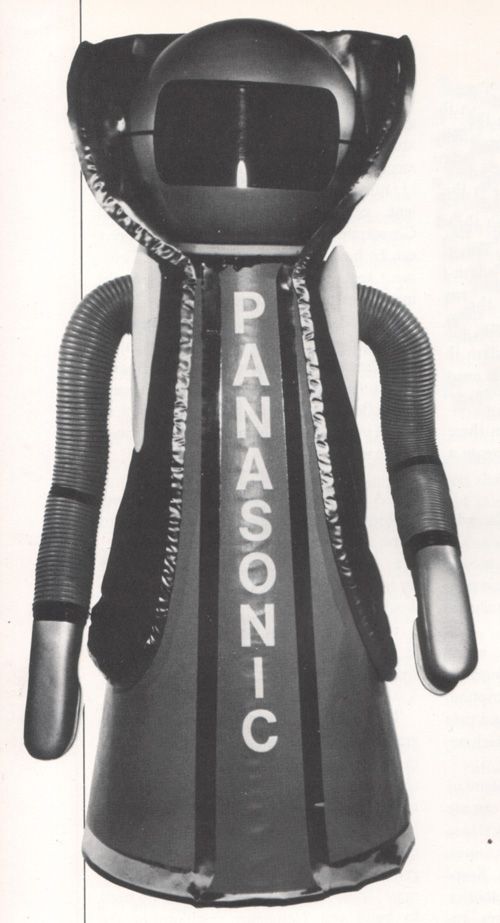

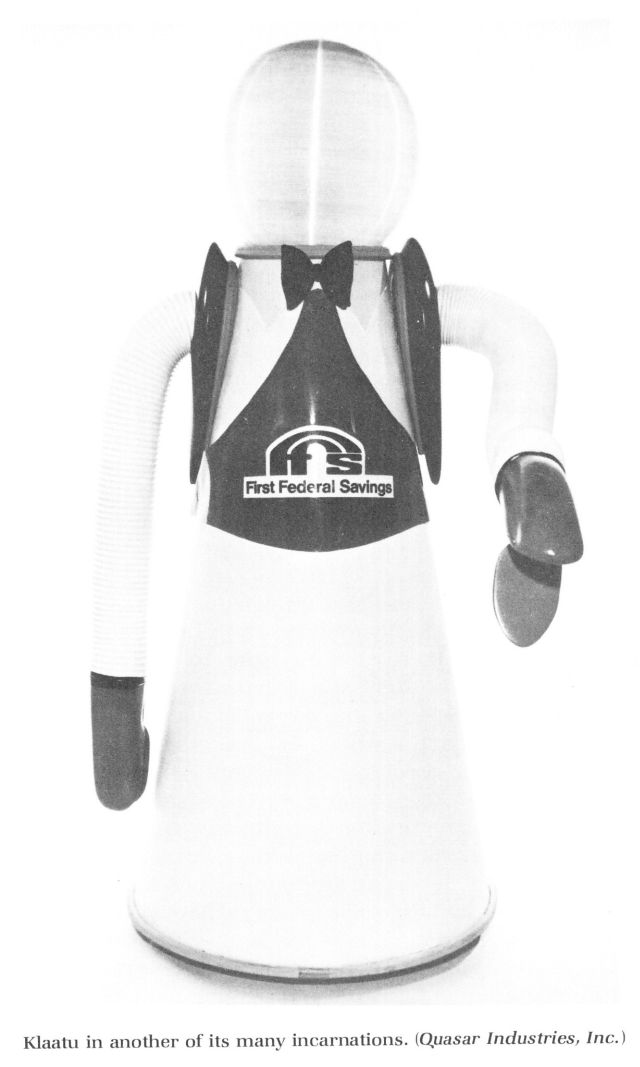
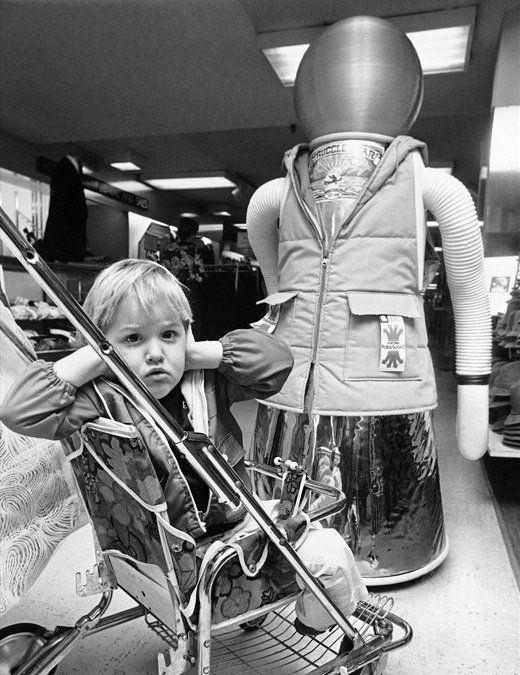
The earlier Sam strugglegear
Later, they tried to enter the Security market with the Century-I and Century-II models. One article refers to them as Sentry-I and Sentry-II.
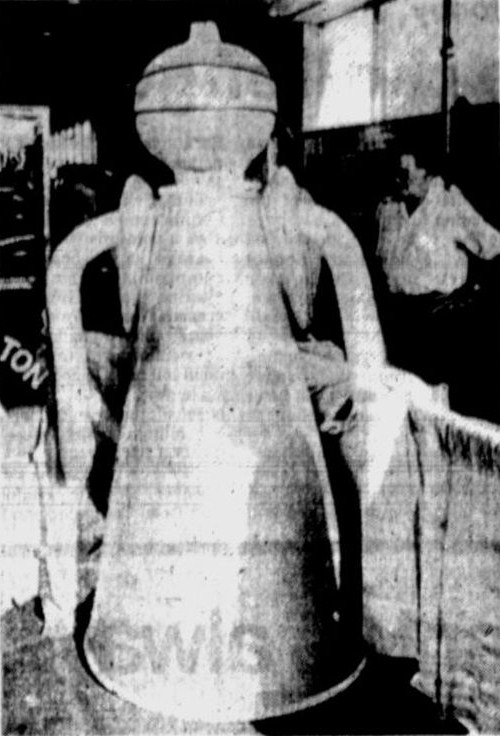
Above- Century-I (Sentry-I) 7ft tall.
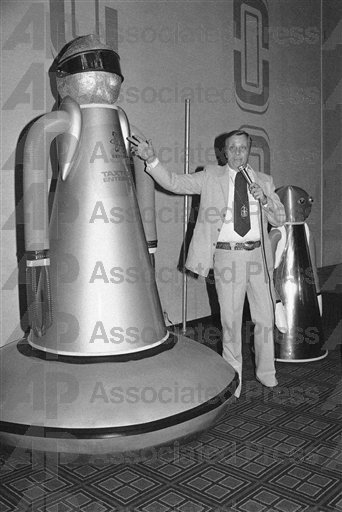
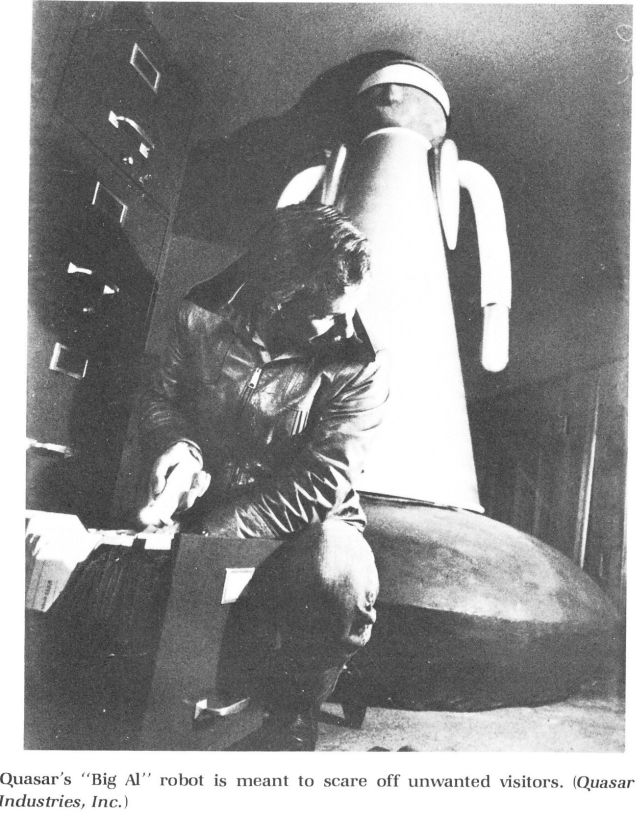
Sentry robot called "Big Al" in this picture.
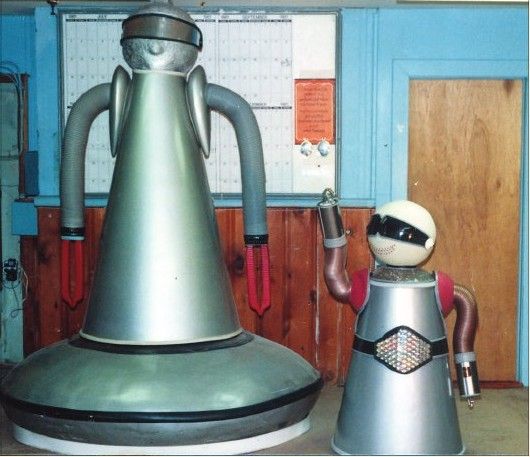
On left is Century-II (Sentry-II) with flywheel base and "lobster" claws.

By mid 1981, the key Quasar robot players were no more. Some Quasar Industries employees went their own way with robotics, with Robert Doornick setting up International Robotics Industries. Gene Beley was a journalist and wrote the Interface Age article. He set up Android Amusement Corp. and also offered Quasar's robots as wello as his own.
Tony Reichelt himself went on to organizing a hot-air Balloon festival.
Spin-off issues of the Klatu Hoax affair – the ARPANET and defamation – add email txt here.
